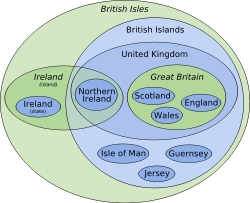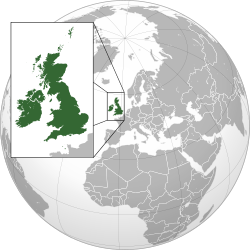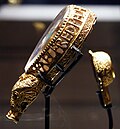British Isles

The British Isles are an archipelago (a group of islands) in north-western Europe. They have a long geographical and geological history.[1] The first people were in Britain by 800,000 years ago (Happisburgh footprints).
The biggest island is called Great Britain, followed by the Isle of Man, the Isle of Wight and Anglesey. Great Britain, the biggest island, is home to three countries. These are England, Wales and Scotland. Great Britain is the biggest island of Europe.
England, Wales, Scotland and Northern Ireland join together to make the United Kingdom.
Some people include the Channel Islands of Jersey, Guernsey, Sark in the term "British Isles", but they are a lot closer to France than to Great Britain. In politics, they are British islands but in geology they are French islands.
The writings of the Roman cartographer Ptolemy used the name "Great Britain" for the larger island in the 2nd century AD.
Deep history
Unlike many island groups (Japan, Hawaii), the British Isles were once part of the supercontinent Laurasia. This means the island has all the rocks of a supercontinent, and none of the problems which limit volcanic island chains such as Japan, or Hawaii for example. Britain has all the resources of a supercontinent, and was a net exporter of minerals as far back as Roman times. Oceanic island chains, by contrast, are limited in their supply of metals and rare elements, because of their volcanic origins.
British Isles Media
The British Isles in relation to the north-west European continental shelf
Red deer hinds in Killarney National Park, Ireland
Population density per km2 of the British Isles' regions
Language branches Modern languages Typical spoken locationsEuler diagram showing language branches, major languages and typically where they are spoken for modern languages in the British Isles.
The Alfred Jewel (9th century)
Pádraig Harrington teeing off at the Open Championship (golf) in 2007
References
- ↑ Bennison G.M & Wright A.E. 1969. The geological history of the British Isles. Edward Arnold. ISBN 0-7131-2226-9








